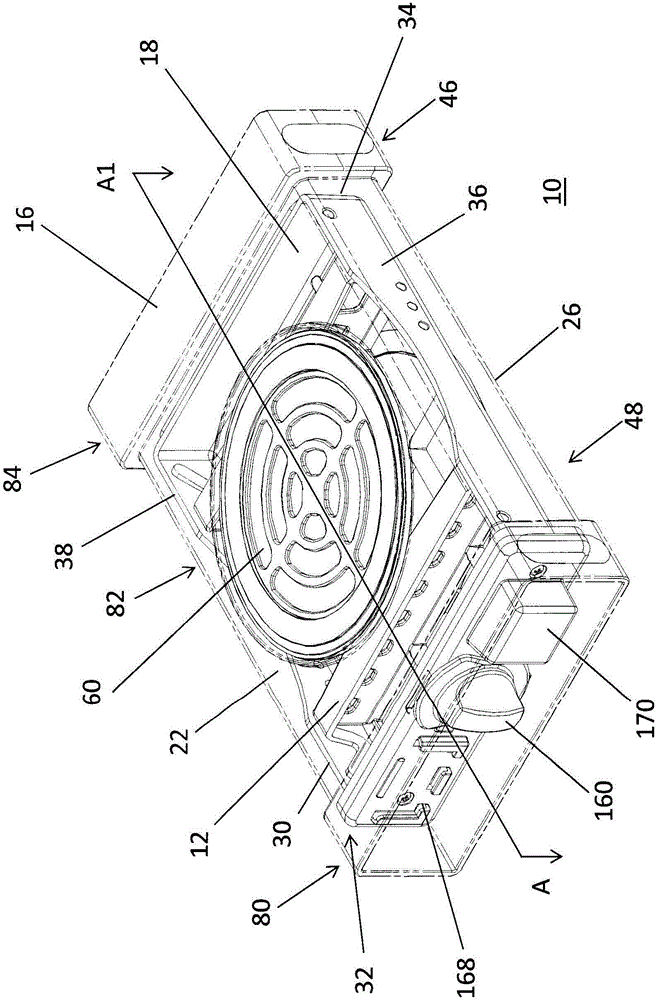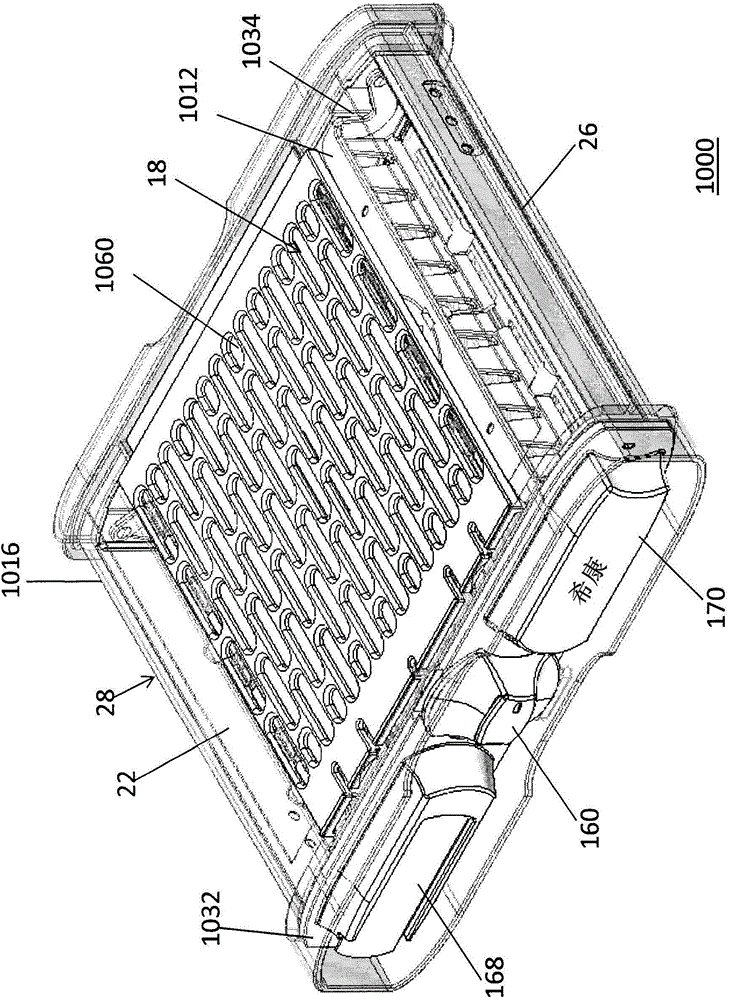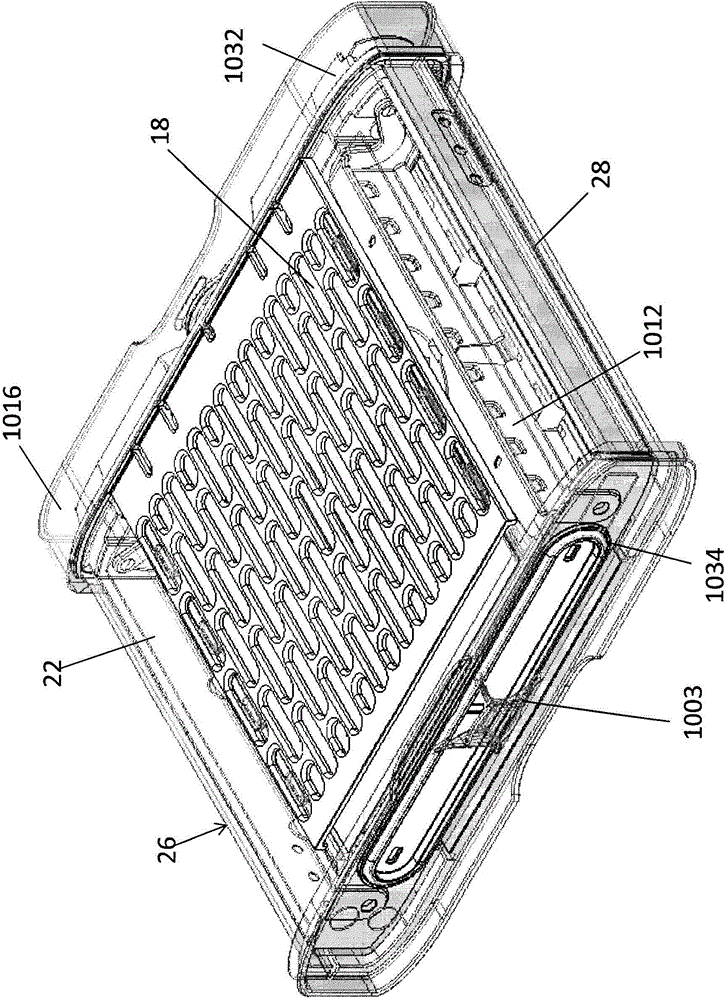Container for washing, sterilization, transportation and sterile storage of articles
A container and article technology, applied in transportation and packaging, disinfection, containers, etc., can solve the problems of limited storage and difficult stacking of containers
- Summary
- Abstract
- Description
- Claims
- Application Information
AI Technical Summary
Problems solved by technology
Method used
Image
Examples
Embodiment Construction
[0046] In the following description, like features in the drawings are given the same reference numerals where appropriate. Terms such as "front" and "rear", "top" and "bottom", "first" and "second", "right" and "left" may be used to identify opposite ends or different configurations of a structure. Such terminology is used for descriptive purposes and is not intended to limit the present disclosure.
[0047] One embodiment of the present disclosure provides a container assembly that houses items to be sterilized, such as medical and dental instruments. Components of the assembly may be placed in a washing facility to wash the instrument and remove debris prior to the sterilization process. One or more containers can be placed in a sterilization device such as an autoclave or a box sterilization device such as STATIM TM , to sanitize the contents of the container. The container also allows for sterile storage and transport of the instrument, and provides improved access to ...
PUM
 Login to View More
Login to View More Abstract
Description
Claims
Application Information
 Login to View More
Login to View More - R&D
- Intellectual Property
- Life Sciences
- Materials
- Tech Scout
- Unparalleled Data Quality
- Higher Quality Content
- 60% Fewer Hallucinations
Browse by: Latest US Patents, China's latest patents, Technical Efficacy Thesaurus, Application Domain, Technology Topic, Popular Technical Reports.
© 2025 PatSnap. All rights reserved.Legal|Privacy policy|Modern Slavery Act Transparency Statement|Sitemap|About US| Contact US: help@patsnap.com



